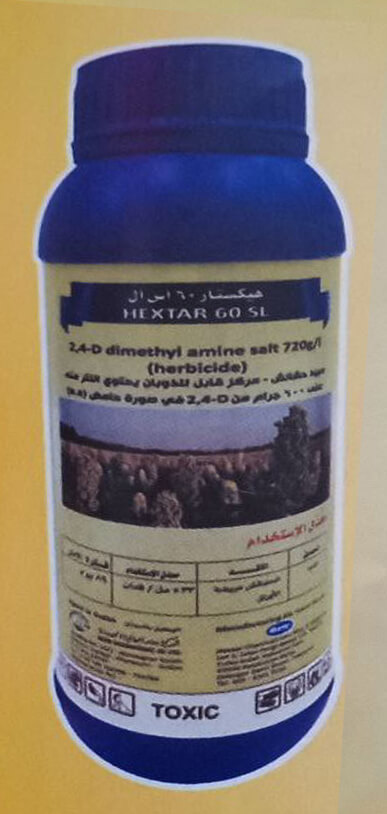- 2,4-D is an herbicide and secondarily a plant growth regulator.1 Formulations include esters, acids, and several salts, which vary in their chemical properties, environmental behavior, and to a lesser extent, toxicity.2,3 The salt and ester forms are derivatives of the parent acid.2 Unless otherwise stated, the discussion in this fact sheet will refer to the acid form.
- The International Union of Pure and Applied Chemistry (IUPAC) chemical name for the acid form is 2,4-dichlorophenoxyacetic acid, its Chemical Abstracts Service (CAS) registry number is 94-75-7, and the chemical family is the phenoxyacetic acid compounds.3
- The dimethyl-amine salt (DMA) and 2-ethylhexyl ester (EHE) forms account for approximately 90-95% of the total global use.4 The acid form is low in solubility and herbicide formulations consist of more soluble forms of the chemical.2 Products containing 2,4-D frequently contain other herbicides as well.5
- Agent Orange, the herbicide widely used during the Vietnam war, contained 2,4-D. However, the controversy regarding health effects centered around the 2,4,5-T component of the herbicide and its contaminant, dioxin.6,7
2,4-D has been used in the United States since the 1940s, and it was evaluated for re-registration in 2005 by the United States Environmental Protection Agency (U.S. EPA).3 The U.S. EPA determined that 2,4-D was eligible for re-registration, but required certain changes to labeled uses to mitigate risk.3 See the text box on Laboratory Testing
Uses:
- 2,4-D is used for broadleaf weed control in agricultural and nonagricultural settings, and it is registered for use in both terrestrial and aquatic environments. Major sites include pasture and rangeland, residential lawns, roadways, and cropland. Crops treated with 2,4-D include field corn, soybeans, spring wheat, hazelnuts, sugarcane, and barley.3 Uses for products containing 2,4-D vary widely. Always read and follow the label when applying pesticide products.
- Approximately 46 million pounds are used each year in the United States, based on data from 1992-2000.3
- Signal words for products containing 2,4-D may range from Caution to Danger.10 The signal word reflects the combined toxicity of the active ingredient and other ingredients in the product. See the pesticide label on the product and refer to the NPIC fact sheets on Signal Words and Inert or “Other” Ingredients.
- To find a list of products containing 2,4-D which are registered in your state, visit the
